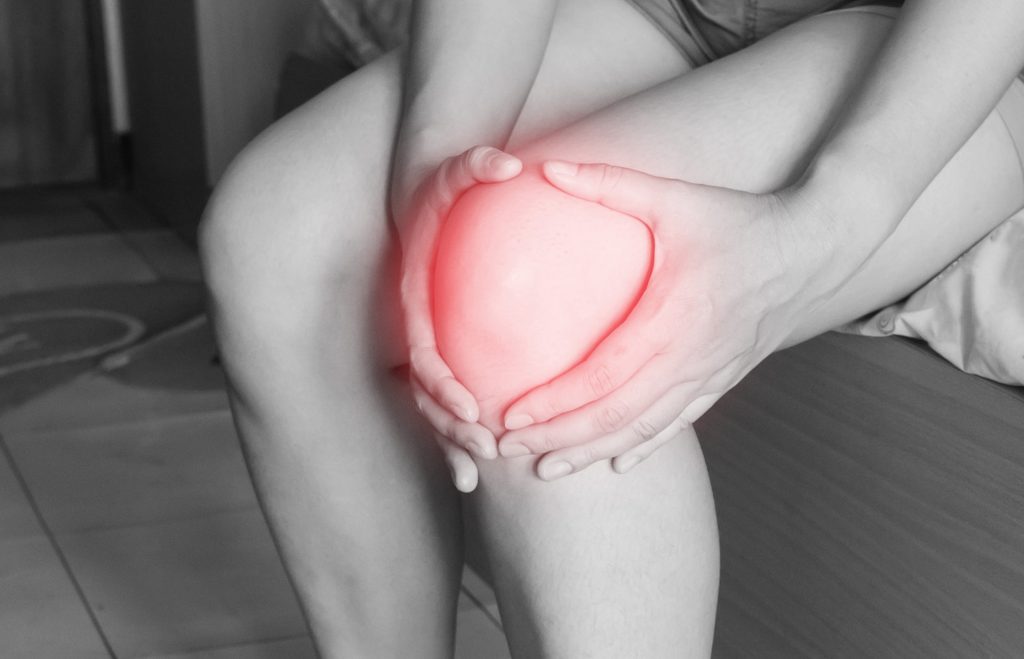Three essential tips for knee pain!

- Is your knee pain holding you back?
- Are you experiencing knee pain when walking downstairs or downhill?
- Are you feeling stiffness in the knee after sitting for a period of time or is your walking capacity limited by knee pain and swelling?
There are many different causes for knee pain, which is why it’s essential to get an accurate diagnosis with your GP or physiotherapist.
Common knee injuries that we see here at Synergy Physio can include:
Patella femoral pain – Patellofemoral pain is simply experienced as a dull ache in the front of the knee, just behind the knee cap, most often with periods of prolonged sitting, kneeling or knee flexion such as during or after driving. There can be several different contributing factors to patella femoral pain. It is often related to a knee cap tracking problem! Watch this video here about knee cap tracking.
If you can imagine the muscles on each side of the kneecap need to work in symmetry to steer the kneecap centrally. If you have tightness on one side or weakness on another, like reins on a horse- this can alter the tracking mechanisms of the kneecap and lead to an aching sensation at the front of the knee!
Three simple tips to help with knee cap related pain include:
- Massage the outer thigh or ITB with a massage stick or (if its not too sore!) try using a foam roller- watch this video here!
- Strengthen the gluteal muscles that support the hip. When you have a weak hip, you are more likely to have knee pain! Watch our favourite hip strengthening exercises here!
- Strengthen the quadriceps muscles with the guidance of your physio.
Osteoarthritis of the knee – Knee OA is usually experienced as a stiffness or lack of mobility which can be felt after periods of rest such as first thing in the morning or after periods of immobility such as sitting. Sometimes people can experience swelling in the knee with osteoarthritic changes.
The key tips for osteoarthritis include:
- Stretch your calf and hamstrings- watch our favourite knee OA stretches here!
- Keep your body weight down!
- Stay active and strong. Research shows that being more sedentary and loss of strength significantly makes the symptoms of knee OA worse! See your physio to prescribe the exercises best suited to you.
Meniscal tears – Also called ‘cartilage tears’ in the knee, this injury can happen suddenly with a twisting force, however meniscal tears can also occur gradually as a result of degenerative wear. Cartilage tears will often be experienced as a sharp joint pain or a painful catching sensation, usually related to twisting.
Tips to manage knee pain from a meniscal tear include:
- Ensure your foot and calf remain flexible. If your foot, ankle and calf are tight this can increase impact load up into the knee!
- Keep your hips flexible! Any hip joint restriction can place additional twisting load into the knee. Check with your physio as to which hip stretch best suits you.
- Stay strong! Check with your physio which exercises are best suited to you.

Our team here at Synergy Physio offer expert knowledge and physiotherapy. Our expertise lies in our thorough biomechanical assessment to understand the cause of your problems and why your pain has developed, to ensure all elements that might be contributing to your symptoms have been addressed.
We also work closely alongside sports medicine physicians and orthopaedic surgeon’s to ensure that you have adequate ongoing care should you need further investigation, MRIs or surgery. Our team are happy to help you with your knee pain!
We look forward to helping you understand your pain and what to do about it! Recover from your pain and get back to doing the things you love. Like to book and appointment? Simply book online, or contact us on 07 5448 3369

Leave A Comment